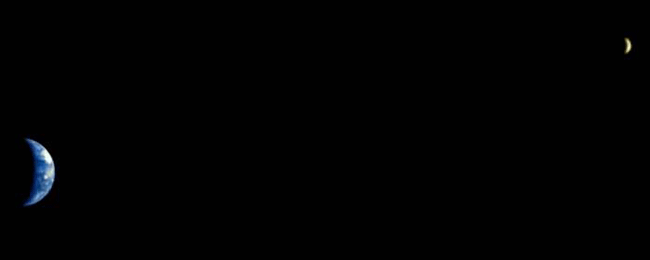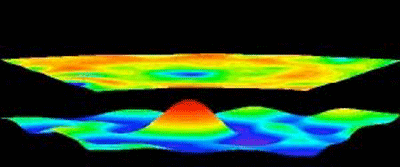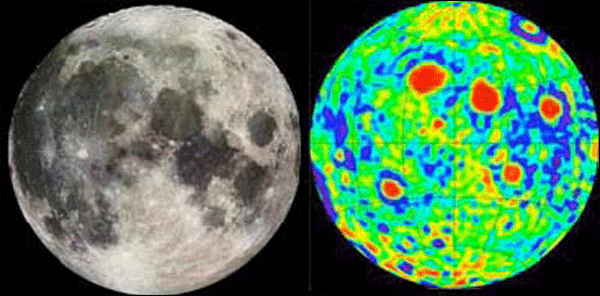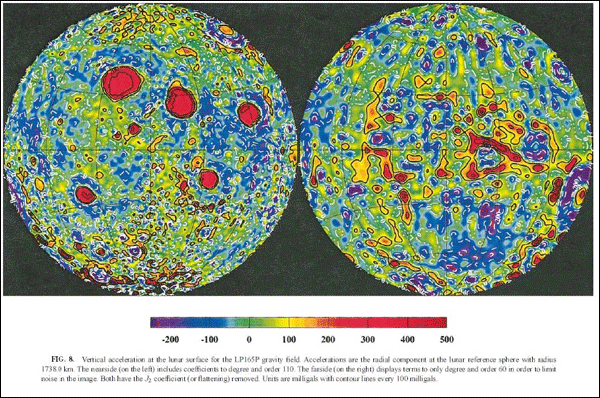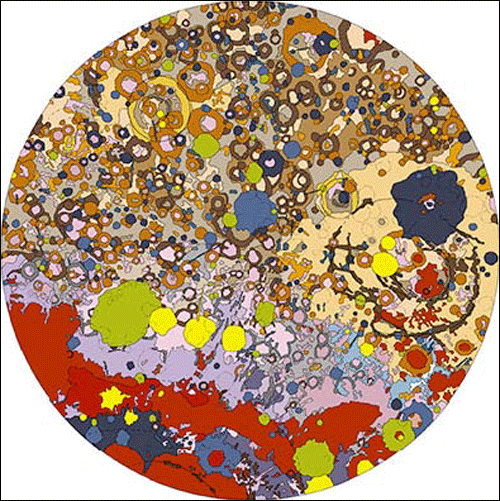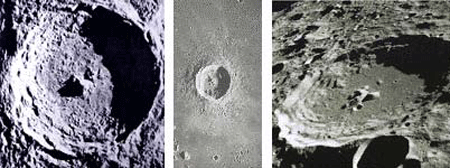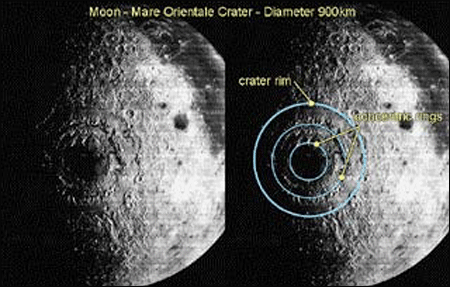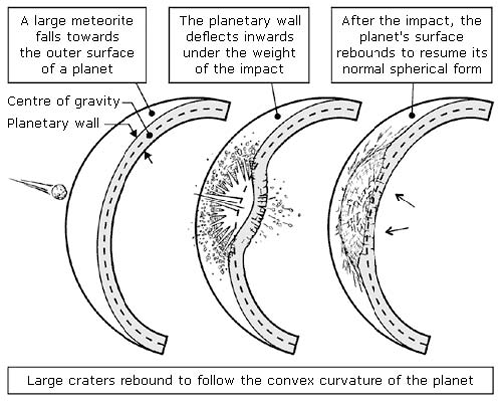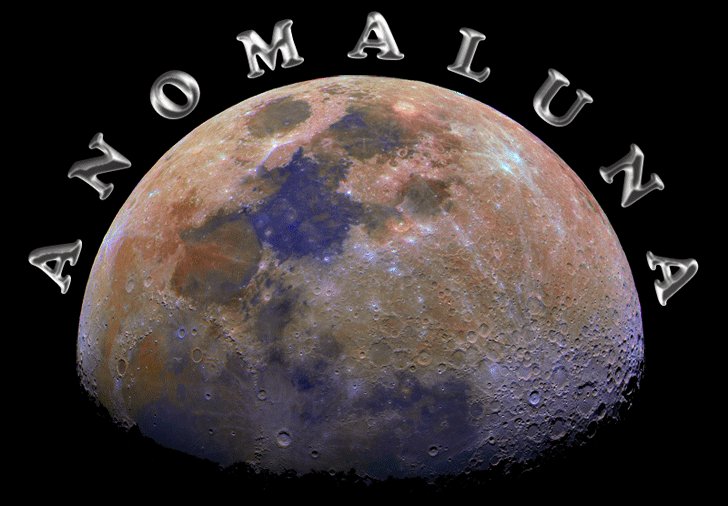 ANOMALUNA!
Part 1: Anomalous Physics Of Luna Just look at it, the Moon. It should not be there at all. Level-headed people who have studied things say that the Earth's moon is the biggest anomaly of the solar system, admitting they have no clue as to why it is there. For one, it is too big a moon for such a small planet like Earth. The duo of them is more of a bi-planetary system than a planet-plus-a-moon. A quick look at comparative planet and moon sizes in the solar system is all it takes. Moon is way too big. It should not be larger than 40 miles or so, but it is over 2,000 miles in diameter. It is the size of the US, and not the size of Maui.
Luna moves on an almost perfectly circular orbit around Earth, not an elliptical orbit. And much too close to Earth. On top of this, it always shows its same side, with only very very slight variations. While the Moon travels once around the Earth, it rotates exactly once -- not more, not less. If it were not exactly once, we would eventually see the far side (not the cartoon), but we don't. This is, of course, how else could it be, coincidence. Coincidence is what you have left over when you apply a bad theory. Moon is at least 4.6 billion years old, and some rocks were announced to be 5.3 billion years old. Not only is the Moon a lot older than Earth, as measured by their best current dating methods, but there is a huge difference in age on the Moon itself which defies explanation: the dust is a lot older than the rocks. Where did the dust on the Moon come from? Not from the rocks.
(this image is stretched horizontally by some 20-30%)
Then, there are hefty gravitational anomalies, so hefty that they have deviated space probes from their intended trajectories. It took NASA a long time to figure this out, and quite some swearing was overheard at orbit mission control. These things are ten times as strong as gravitational anomalies on Terra. They are called mass concentrations, or mascons. Above image shows the lunar terrain on the upper plane, with the lower plane showing the gravitational concentration. Yes, it looks sexy for some reason.
Almost all the mascons (80%) are on the side facing us (below left)
The Mother Of All Coincidences Is The Death Of All Bad Theories For some reason, the Moon is exactly the size so as to obscure the Sun during a full eclipse. Because it is 400 times smaller than the sun but 400 times closer to the Earth. It has been called the most improbable coincidence in what we think we know of what is in the universe (this one). Conventional textbooks ask you to believe that a massive object impacted with Terra when it was all nicely molten, and the impact split off Luna, which turned out to be exactly the size as to fit into the Sun's disc. Just as likely as the big bang: The creation of the universe from nothing, for no reason, in a single instant. Wake up to the bedtime stories of shience and spot them all around you. This is how the disco very disco baby news tries to sell you a story akin to the Flat Earth. They also try to be funny.
"By mapping the distribution of a range of elements over a wide area of the Moon, researchers hope to test theories on how the Moon was formed. The most popular is the 'giant impact' theory, which says that when the Earth was young, around 4.5 billion years ago, a massive body the size of Mars collided with our planet. This impact flung molten debris from the mantle of both the Earth and the object which hit us into orbit around the Earth. Over the course of tens of millions of years, the debris stuck together to form the Moon. Notice also the clue to the ancient world, the symbolism, the mystery, the legends of the full solar eclipse. Ritual sacrifices go up everywhere, at least on Earth.
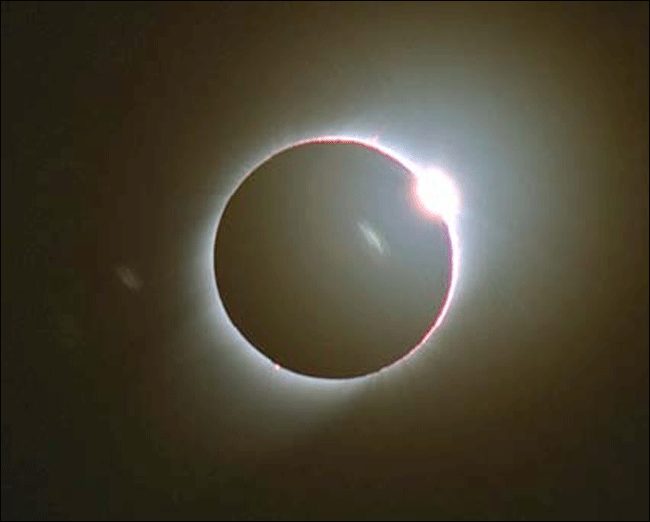 During a full solar eclipse, the Moon exactly blots out the Sun and allows to see its corona. One can speculate freely that this is an indicator to look at the Sun's corona as one of the keys to solving many puzzles. The corona is inconceivably hotter than the Sun's surface. This can not be explained with the concept of a Sun which is hottest at the center of its falsely postulated fusion mechanism. Every full solar eclipse, the ultimate design team shows off how they have left clues for those who can see them. This gets us into the Electric Universe model and plasma physics, which has been covered here at Viewzone recently. The fantastic solar eclipse photography of Miroslav Druckmuller. You can still see the Moon's surface features during this 2009 solar eclipse image. http://www.zam.fme.vutbr.cz/~druck/eclipse/
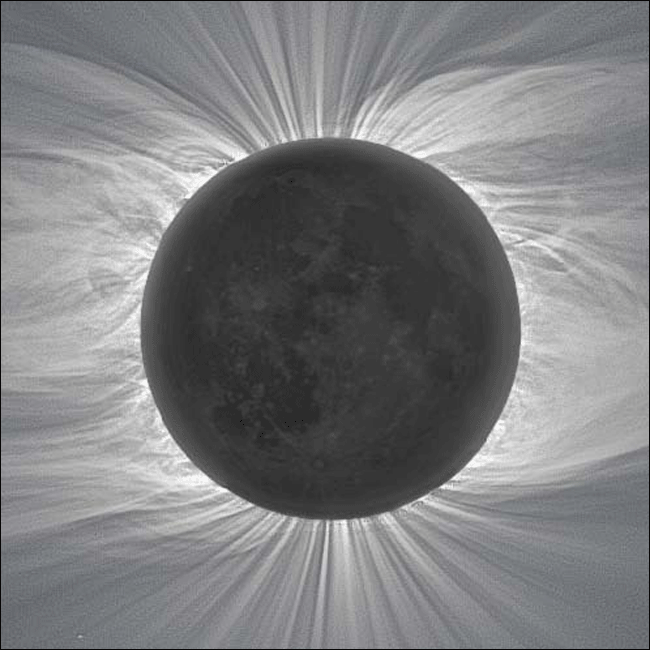 This is how humans have rather recently figured out to study the Sun, blotting out its glaring body with a patch. Another truly artistic thing of the Moon to do is to set at the same point on the horizon as the Sun does, but at opposite solstices. At the winter solstice, the Moon rises where the Sun rises at the summer solstice. Nobody else other than someone on Earth can appreciate this stunt. The Sun's and the Earth's dimensions and units seem to underlie the blueprint for the Moon, which acts as a stabilizer, holding the Earth at the right angle to allow for climate seasons and keeping water liquid on most of our planet.
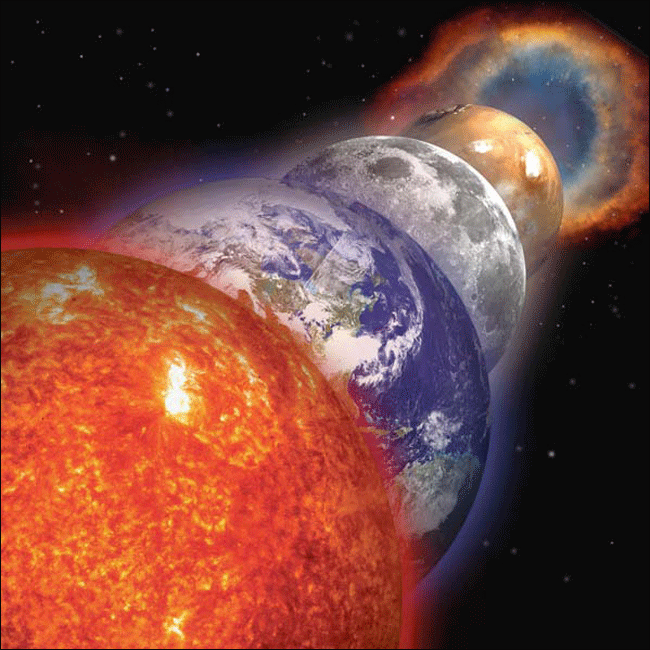 Lunar anomalies and the history of lunar explorations, and what's so strange about it ... impossible to sum up in a nutshell. But not that impossible. Parked Spaceship In Sky: not made of cheese but The Cheese Luna itself is an anomaly, a big one, and from there it only gets curiouser and curiouser the more you dig into it. Since we are not wet behind the ears, let's collectively do a subversive thing and present a reverseengineered hypothesis. A hypothesis which rides this investigative horse right into consensus reality (actually, hopping right over it) and presents a fresh perspective. We know that we can not rely on anyone to tell us the truth in case the truth is relevant to some degree. Not governments, not scientists or their colleagues over at religion, nobody except independent thinkers and researchers will present you the sheer volume of loose ends that you have to stumble over while trying to understand the world. The other so-called investigators are shinetists, polishing their sh*t and shining their asses, who are paid while (and only while) they are shutting up, "debunking" independent research, and playing the politically correct party line. Politically Correct, by the way, is a Soviet term. Usually, these shiny priests just ignore their open zipper and smirk.
Luna was not captured as a passing-by space wanderer, and it was not made at the same time under the same basic parameters that acted upon the formation of these two solid planets. Solid they are, on their outside. We are not so sure about one, or both, being hollow. Yes, Moon too rings like a gigantic bell after being struck by discarded rockets or meteorites, as picked up by seismographs that were left on its surface. It also has periodic "creaking at the seams", as the 20-mile thick shell plates move against each other. It is way too light with its mean density of 3.34 g/cm3, compared to Earth's 5.5 g/cm3. Large areas inside Luna must be cavities, or it does not add up.
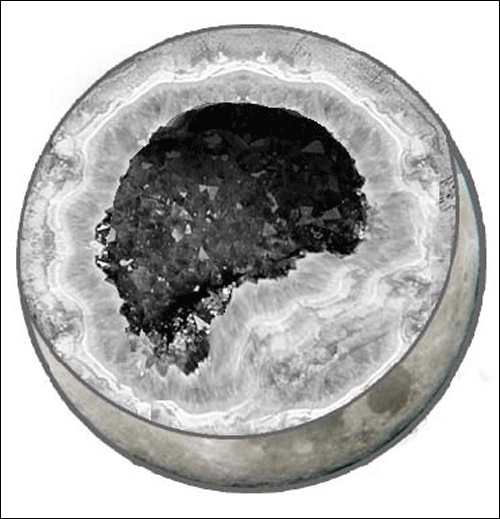 Moon is, apparently, a terraformed, engineered piece of hardware, with an outer layer of dust and rock, and beneath this 3-mile layer, a solid 20-mile thick shell made from highly resistant materials like Titanium. Uranium 236, Mica, Neptumium 237. Not what you would expect. No meteorite can really smash it to pieces. Moon seems to have been towed into place through space. Without it, there would be no life on Earth as it would be a sterile habitat. Now let's not take it too personally, it was probably not placed where it is just for us, but for Terra as such. We just happen to look at it and wonder, at least some of us. This, if true, as the evidence indicates, would mean that there is a Mighty Arranger involved. Because there are fingerprints all over the place that this is so. Douglas Adams called this guy "Slartibartfast", the unassuming, shortish, bearded planet designer in "The Hitchhiker's Guide To The Galaxy". This is likely a pseudonym. The Hollow Moon ... Moon ... Moon ... Moon ... Moon The larger the impact craters on Luna, the shallower they are, compared to the crater diameter. There is a maximum depth of about 3-4 miles for any size of crater, even the largest ones of 180 miles do not cave dozens of miles into the ground while impacting at speeds of dozens of miles per second. Why is this lunar surface not, after such impacts over such a long time by such large and fast and heavy objects, well ... toast? Because where the bullet hits the 20-mile kevlar vest of spaceship Moon, it just blows to pieces, scattering the loose surface material that forms the Moon's outermost surface layer. You may know how strong a sphere is -- even an eggshell is pretty robust. Imagine how impenetrable a spherical 20-mile thick titanium shell must be. Below is a visual rendering of lunar craters, including examples, with varying crater shapes according to their size. (http://www.hollowearththeory.com/articles/impactCraters.asp)
Medium craters (15 - 60 miles diameter)
Large craters (over 60 miles diameter)
However ... we are not so sure that a massive titanium-alloy shell needs to bulge like a dented ping pong ball after impact, or that all of the craters on the lunar surface were caused by impacting meteorite bullets. Terraforming equipment would leave such debris on the surface while carving out the planet's guts. At which point it makes sense to call it a spaceship. Let's see where the evidence leads when we visit the Moon with telescopes, cameras and landing modules -- and remote viewing. This was just the physics introduction.
 Comments:
|
